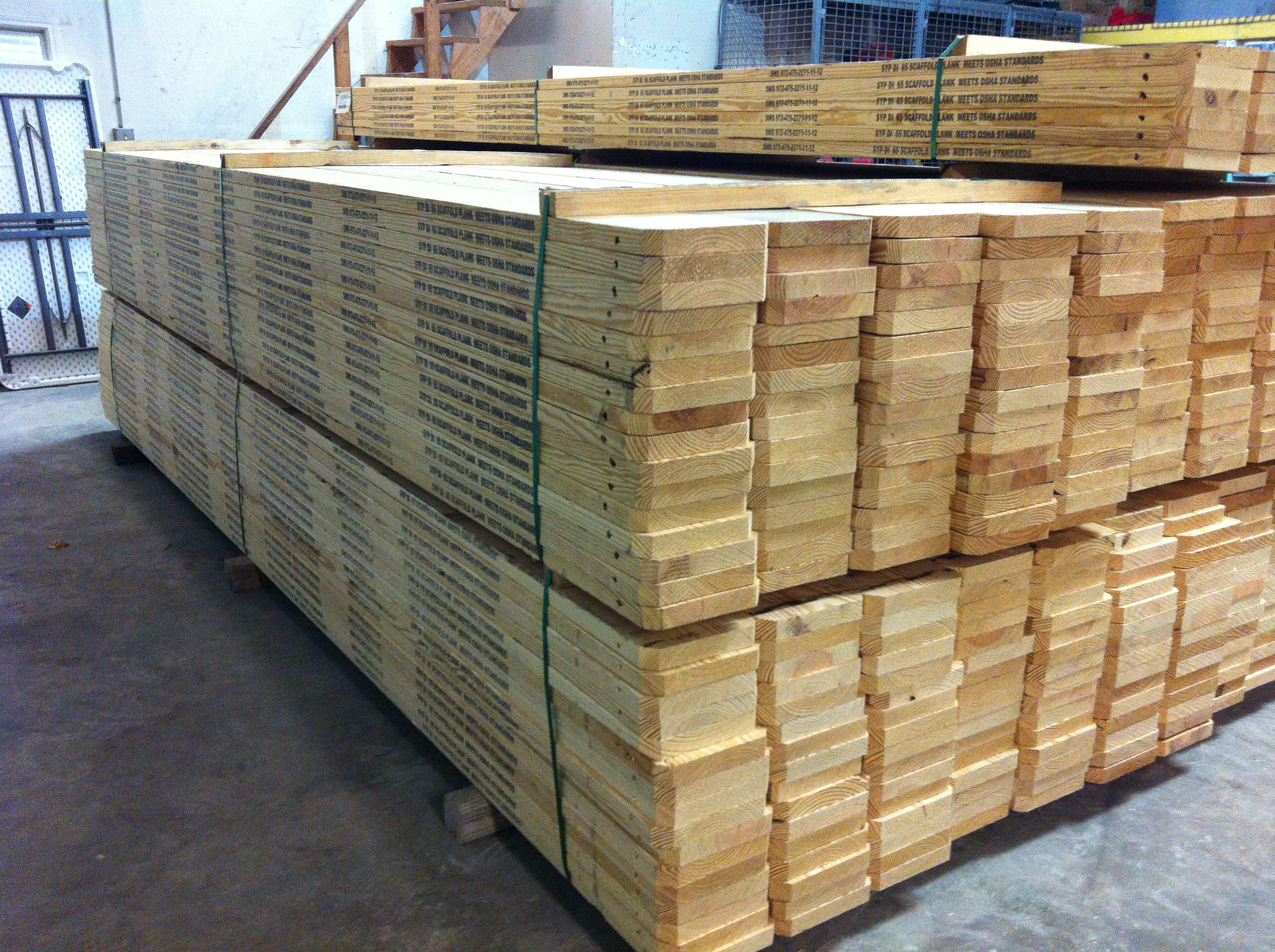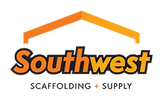Load Limits On Scaffold Boards

Load Limits on Scaffold Boards in Medium Duty Applications
OHSA designates three different categories for load bearing calculations on scaffold boards. They are:
Light Duty - 25 pounds per square foot.
Medium Duty - 50 pounds per square foot.
Heavy Duty - 75 pounds per square foot.
These ratings are based on the intended load, which is calculated by dividing the total weight to be placed between two spans of scaffolding by the total area between the two spans. Most of our customers fall in the medium-duty category so this is what will be addressed in this post. In most masonry applications, 5' wide frames are spaced 7' apart and use nominal thickness 2X10 lumber for the planks (nominal thickness 2X10 lumber actually measures 1.5” X 9.25'). In this setup, there is approximately 35 sq. ft. of area between the frames.
If you apply an intended load of 50 pounds per square foot to the 35 square foot platform, a maximum of 1,750 pounds may be applied to the platform. Using full thickness (solid sawn) lumber, this weight is not a problem, however, full thickness lumber is hard to find so most companies use nominal thickness lumber.
OSHA Load Requirements for Scaffold Boards
Scaffolding and scaffold board load requirements are governed by OSHA 1926 Subpart L. OSHA has provided a non-mandatory Appendix A to help contractors comply with the requirements of Subpart L. This appendix contains the following chart:
_______________________________________________
| |
Maximum | Maximum | Maximum
intended | permissible | permissible
nominal | span using | span using
load | full thickness | nominal
(lb/ft(2)) | undressed | thickness
| lumber (ft) | lumber (ft)
______________|________________|_______________
| |
25............| 10 | 8
50............| 8 | 6
75............| 6 |
______________|________________|_______________
According to the Appendix, using the typical 7’ span between the frames with the 2X10 nominal thickness lumber will not achieve the 50 pounds/square foot rating in terms of board capacity. The maximum allowable span between the frames with this type of board is 6’. Here is another link to an OSHA workbook with this information.
Deflection Tolerances for Scaffold Boards Per OSHA
Do the Appendix A guidelines create a problem for medium-duty contractors (basically all masonry contractors) using 7' spans? Not necessarily. Appendix A is a guideline and not mandatory. The mandatory rule is found in OSHA 1926.451(f)(16) and says a scaffold board cannot deflect more than 1/60th of its length when loaded. This means a board on a 7' span can deflect up to 1.4" when fully loaded.
Some scaffolding companies, including Southwest Scaffolding, Solid Wood OSHA Boards which will deflect less that the 1/60th of the span as required by OSHA when under the stress of a medium-duty load. These boards are tested by an independent agency, and stamped. As long at the boards deflect 1.4" or less when you are working on them, they are OSHA compliant.
OSHA's deflection limitation makes a good case for using OSHA tested scaffolding board or manufactured boards/platforms instead of 2X10 nominal boards construction grade boards found at most lumberyards. In addition to scaffold grade lumber, Southwest Scaffolding sells both steel and aluminum scaffold planks that are rated for both 50 lbs/sq. ft. and 75 lbs/sq ft. Another solution to the deflection requirement is to double your planks across the spans that will be receiving materials or equipment such as cubes of brick or block. Also, consider that when you are using outriggers, the weight of your workers on the outrigger platforms will not be applied to the main platform.
Recent Posts
-
Scaffold Maintenance: Tips and Tricks for Safe and Efficient Operations
Maintaining scaffolding equipment is crucial for ensuring the safety and efficiency of any construct …Jul 22nd 2024 -
Innovative Uses for Scaffolding Beyond Construction
What do you think of when you hear the word scaffolding? When most people think of scaffolding, the …Jul 22nd 2024 -
Scaffolding Safety: The Role of the Competent Person
Southwest Scaffolding understands that scaffolding plays a significant role in construction. However …Jul 16th 2024



